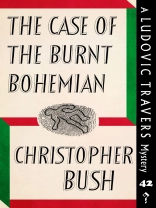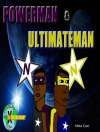Isn’t it a tremendous coincidence that his murderer should also have had large front teeth?
Ludovic Travers has received a good many queer requests and enquiries at the Broad Street Detective Agency, but a psychiatrist in fear of his life and in search of a bodyguard is something new. An appointment is made for the following day, but Travers has barely completed a few discreet enquiries concerning his new client when he receives another call. This time it is a summons from George Wharton of Scotland Yard. Would he please come to a flat in Chelsea where an artist has just been stabbed, and an attempt made to destroy evidence by burning the body.
It looks like a routine matter till suddenly the long arm of coincidence stretches out and ties the Cases of the Nervous Psychiatrist and the Burnt Bohemian into one knot of Gordian complexity. Christopher Bush is a proven master of the true detective story, and in this one he is at his urbanely intriguing and ingenious best.
The Case of the Burnt Bohemian was originally published in 1953. This new edition features an introduction by crime fiction historian Curtis Evans.
“Yet another sound piece of work . . . in that, alas!, almost extinct genre, the real detective story, with Ludovic Travers in his very best form.” Anthony Berkeley
Giới thiệu về tác giả
Christopher Bush was born Charlie Christmas Bush in Norfolk in 1885. His father was a farm labourer and his mother a milliner. In the early years of his childhood he lived with his aunt and uncle in London before returning to Norfolk aged seven, later winning a scholarship to Thetford Grammar School.
As an adult, Bush worked as a schoolmaster for 27 years, pausing only to fight in World War One, until retiring aged 46 in 1931 to be a full-time novelist. His first novel featuring the eccentric Ludovic Travers was published in 1926, and was followed by 62 additional Travers mysteries. These are all to be republished by Dean Street Press.
Christopher Bush fought again in World War Two, and was elected a member of the prestigious Detection Club. He died in 1973.












